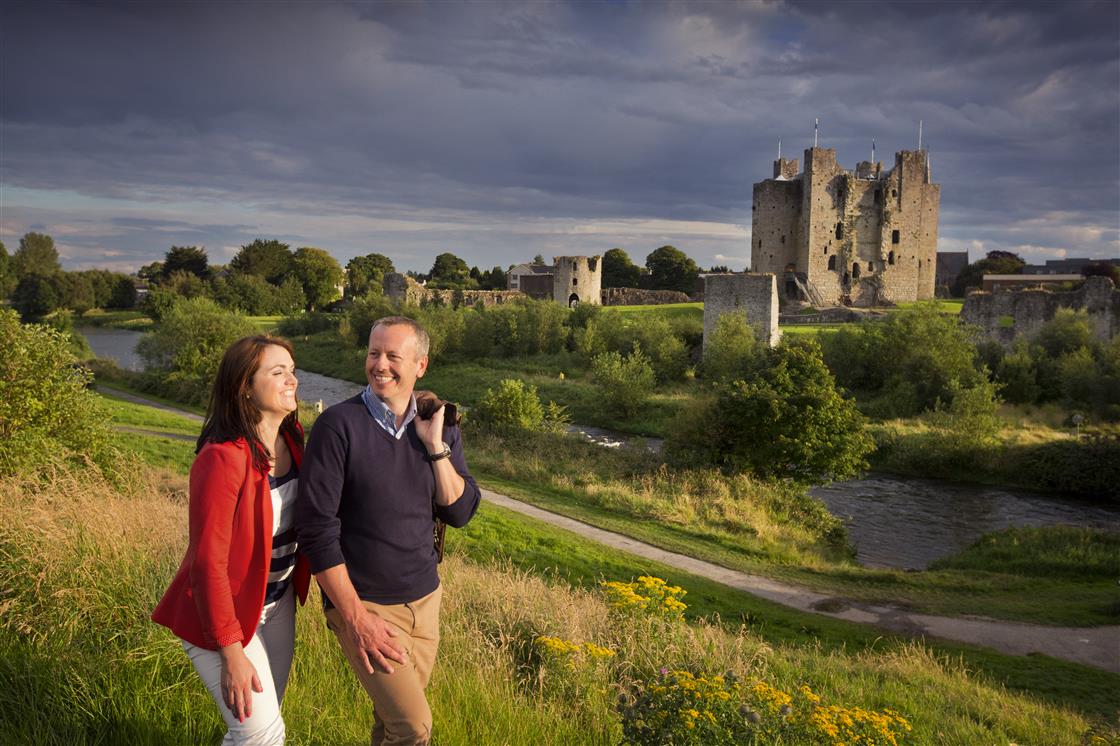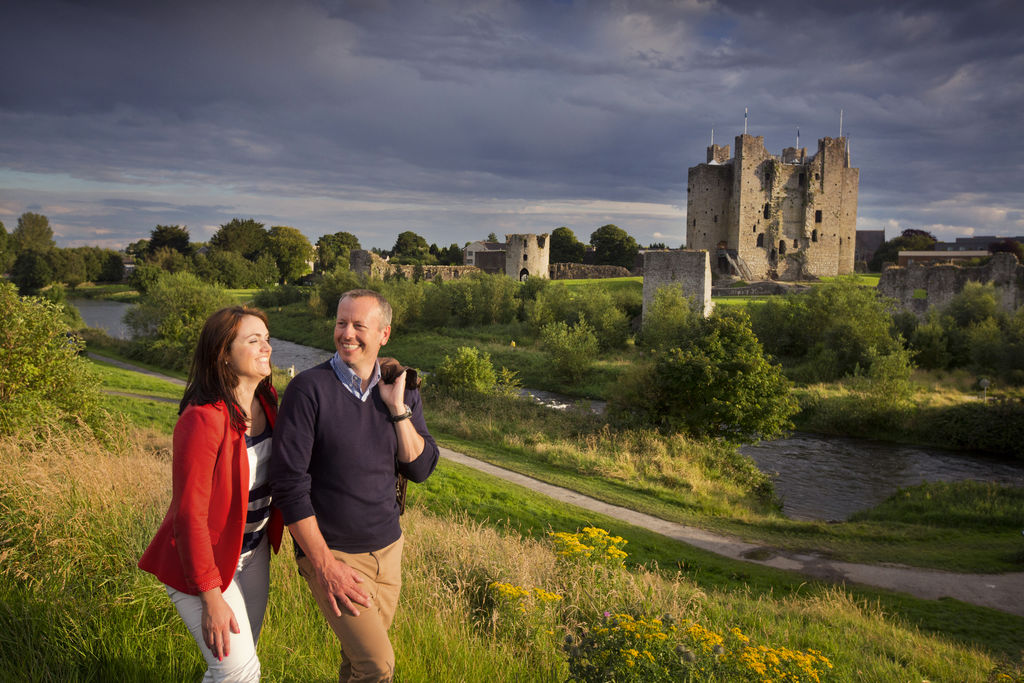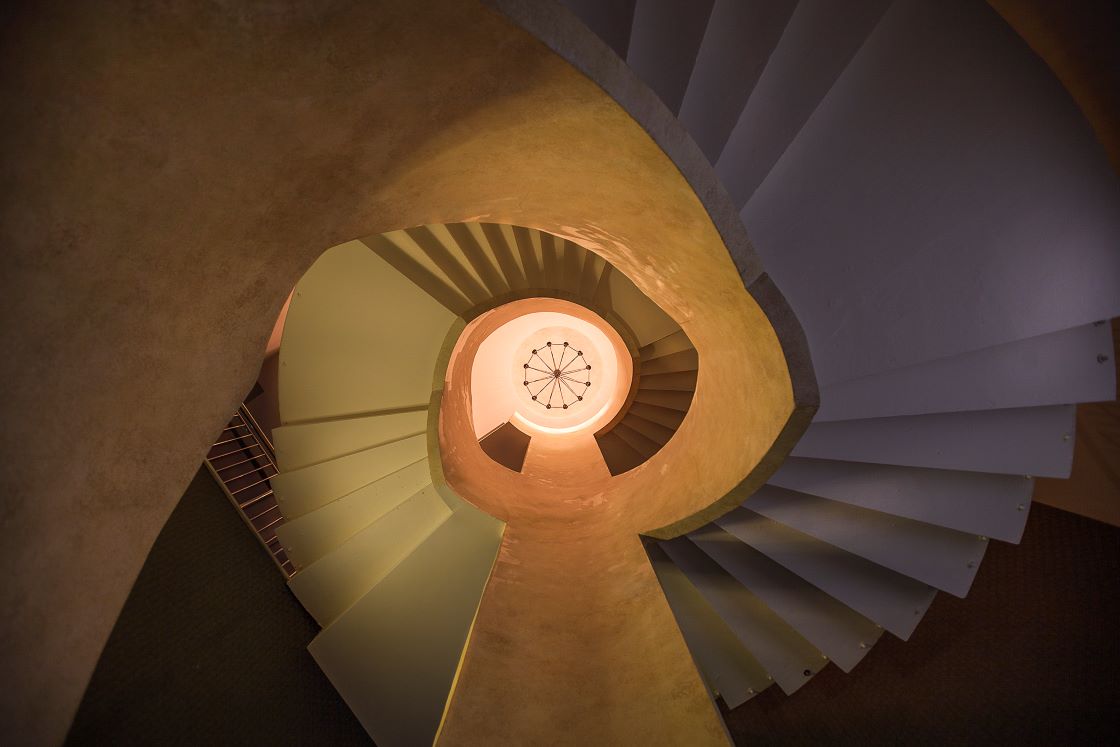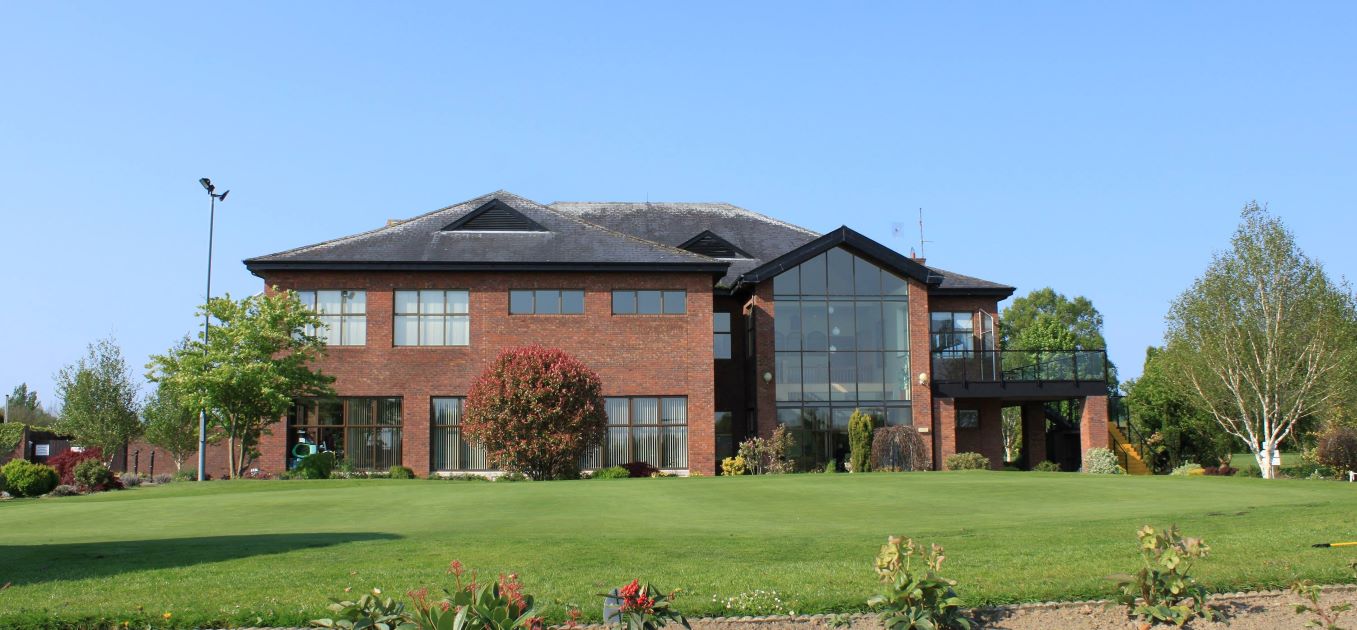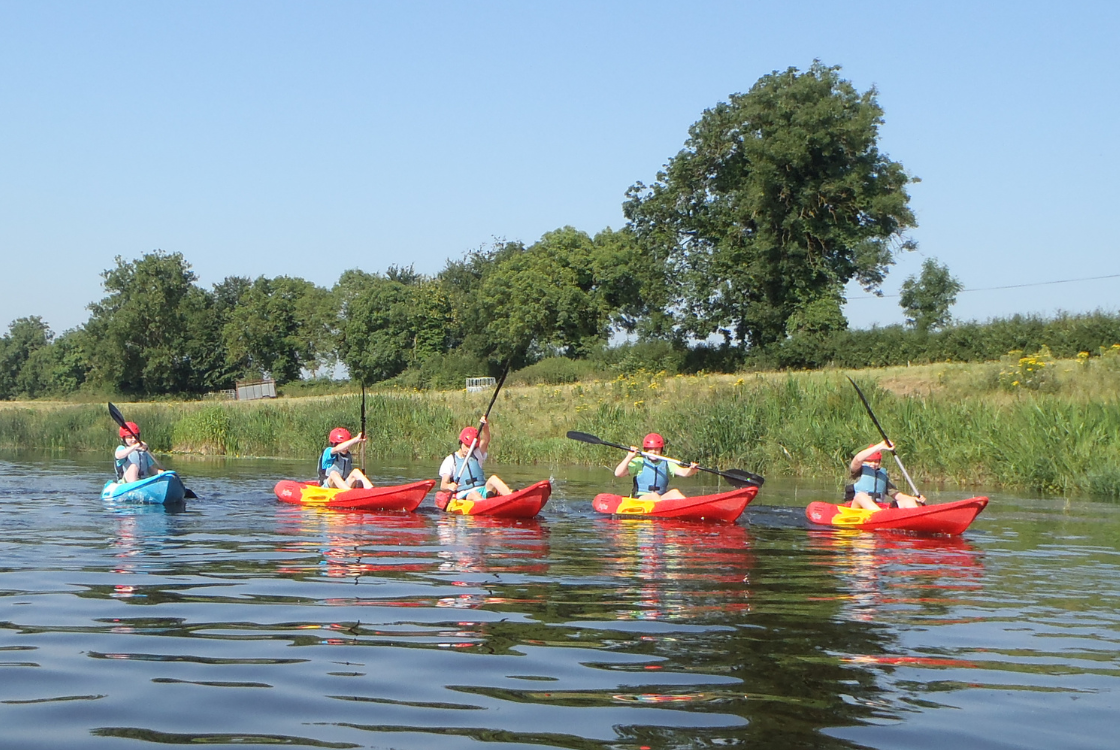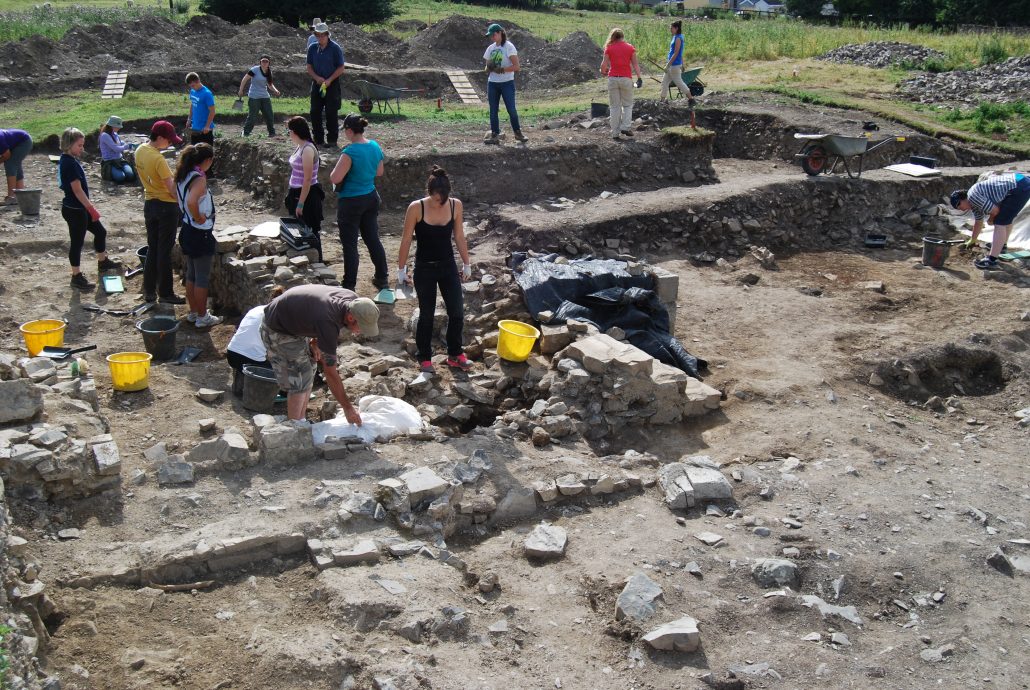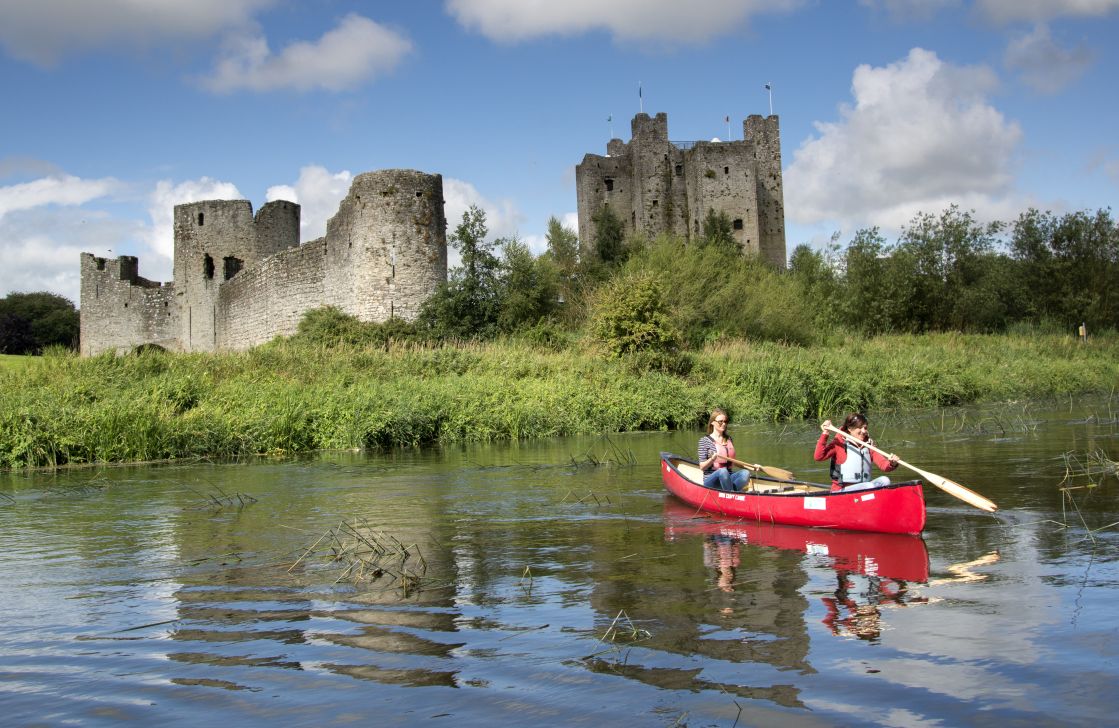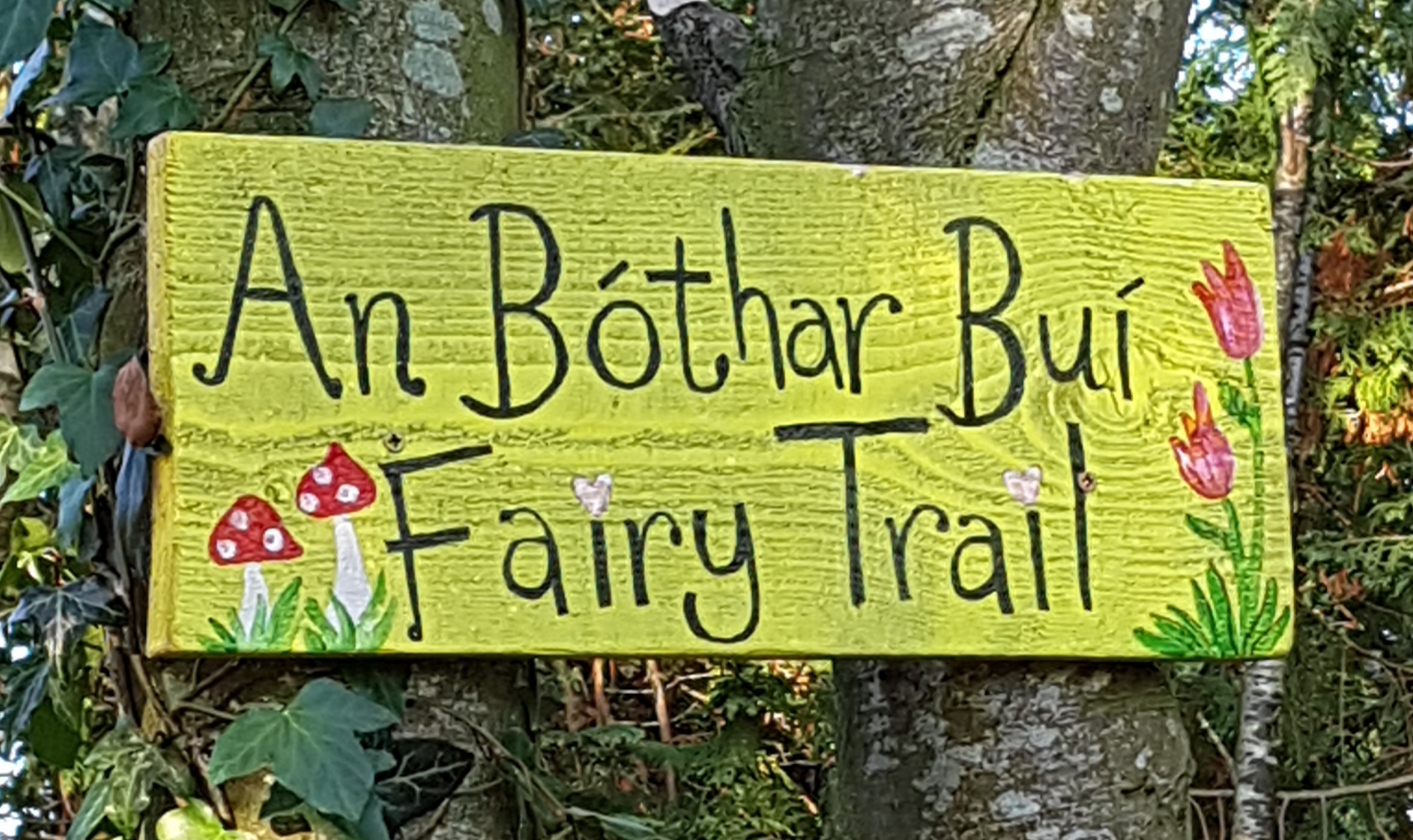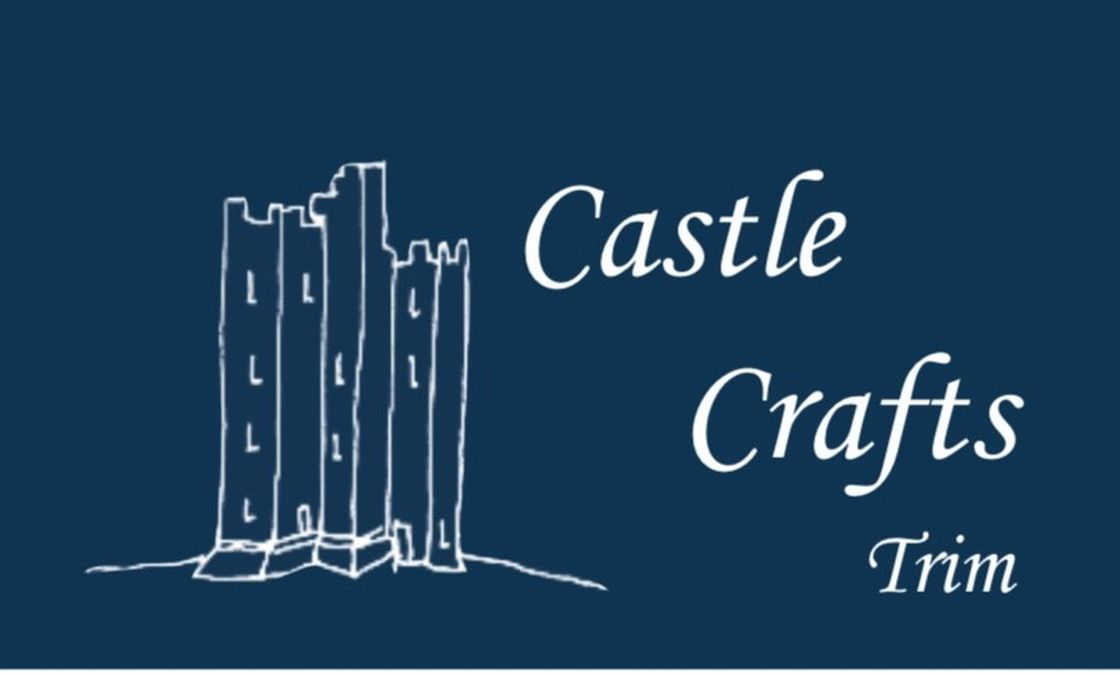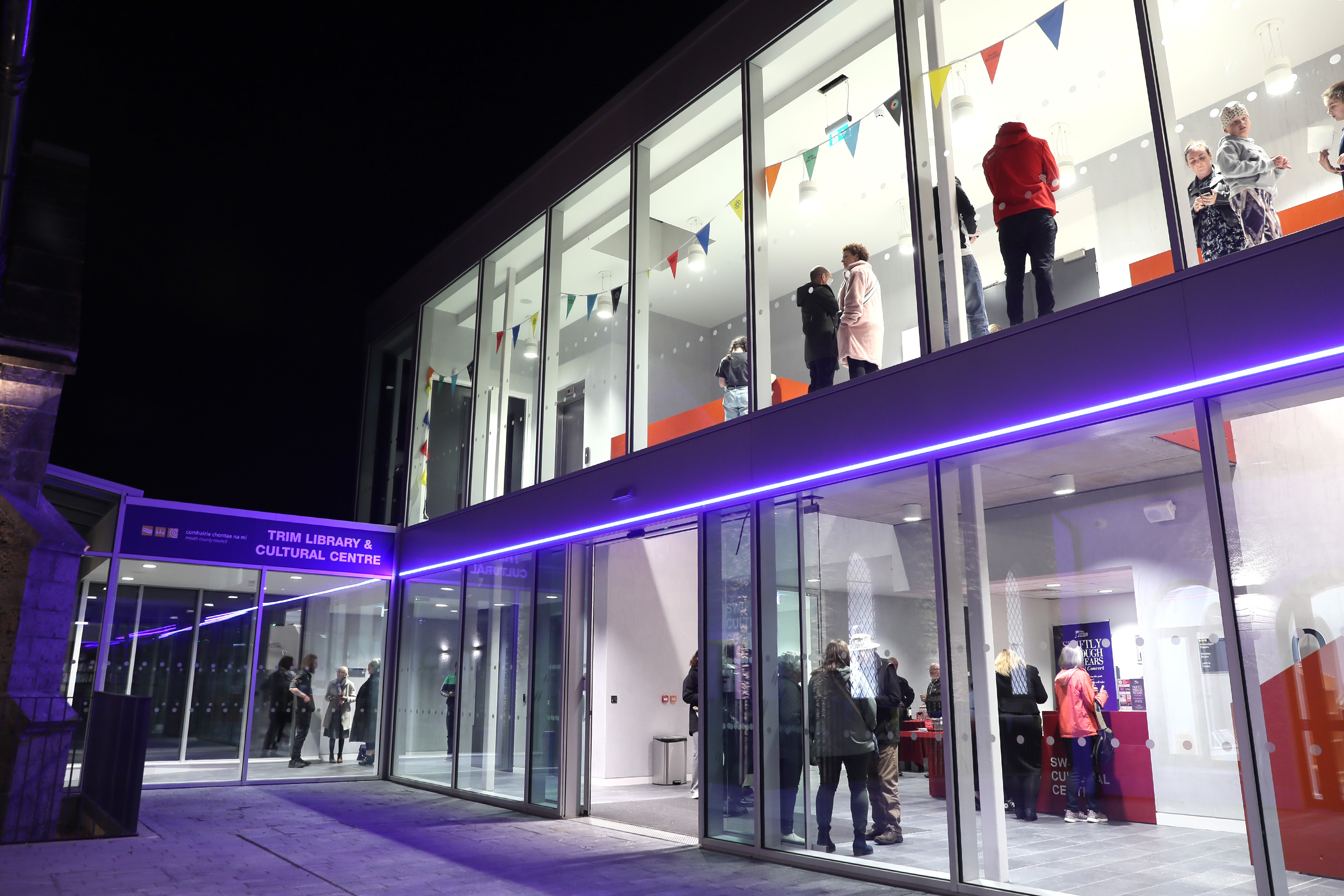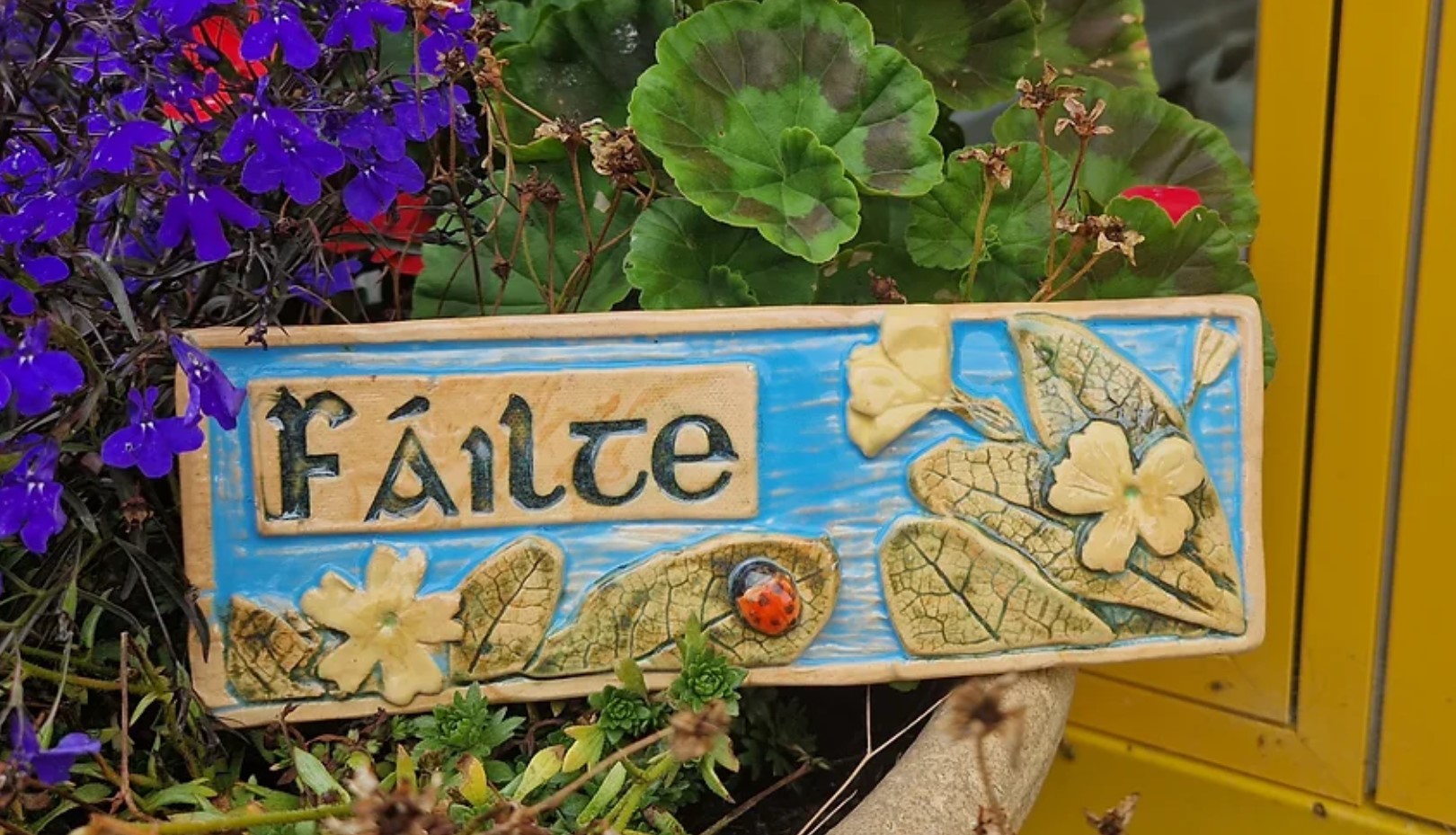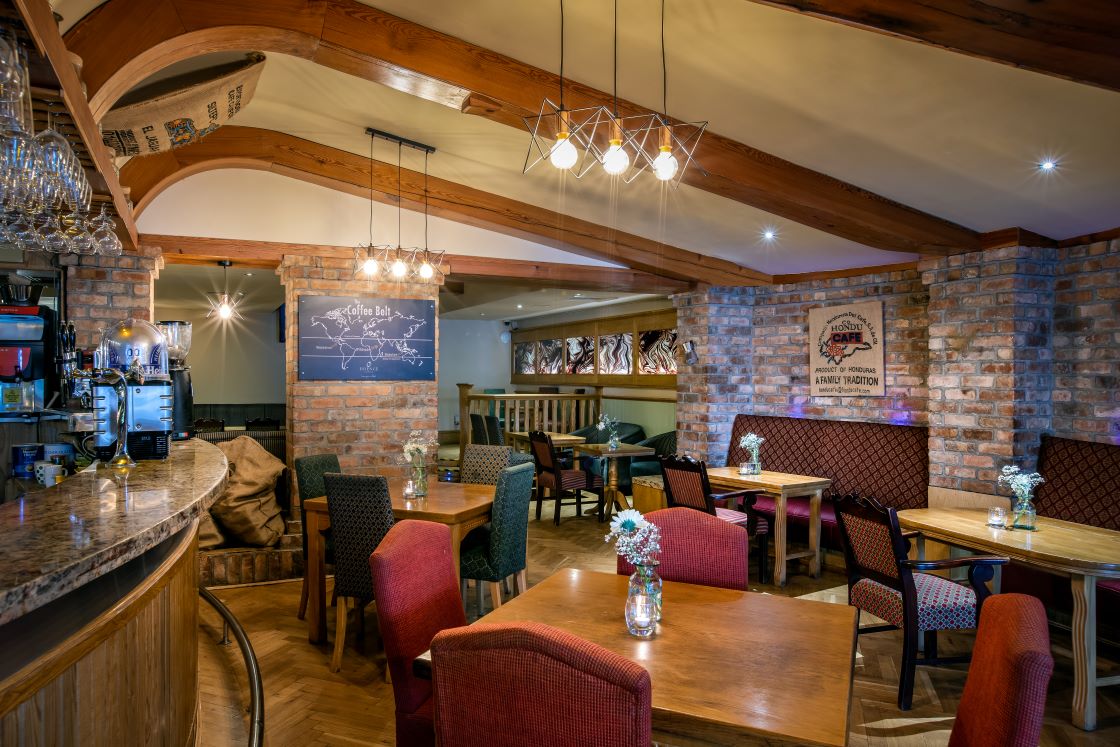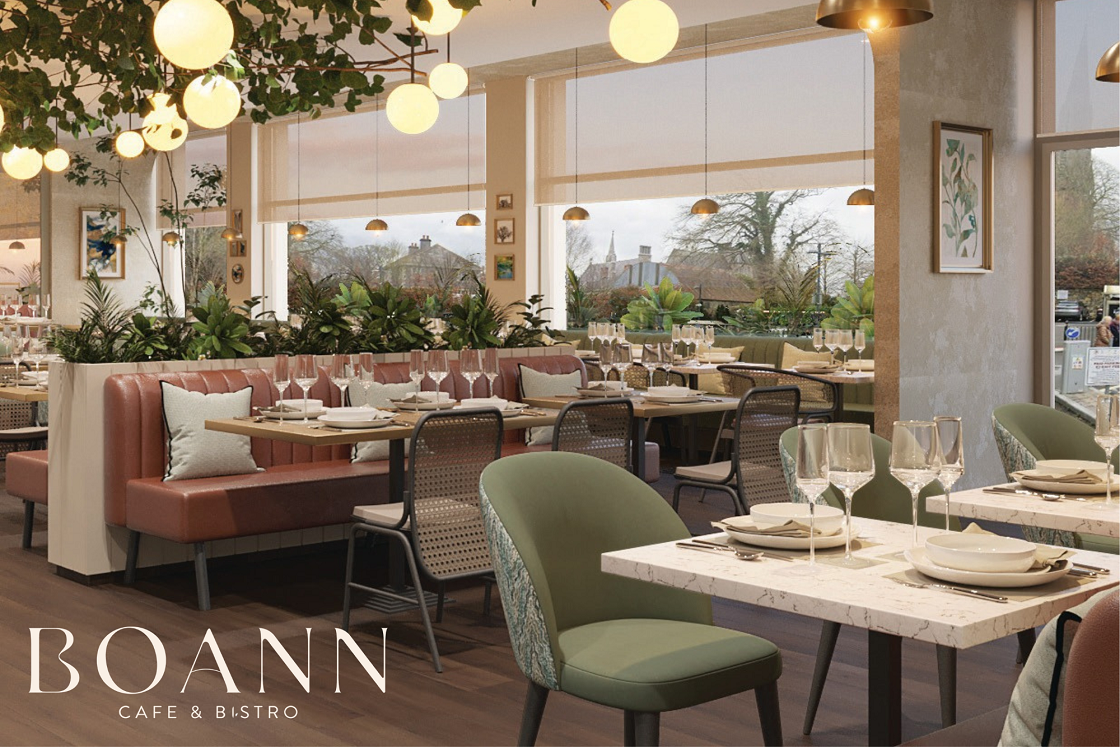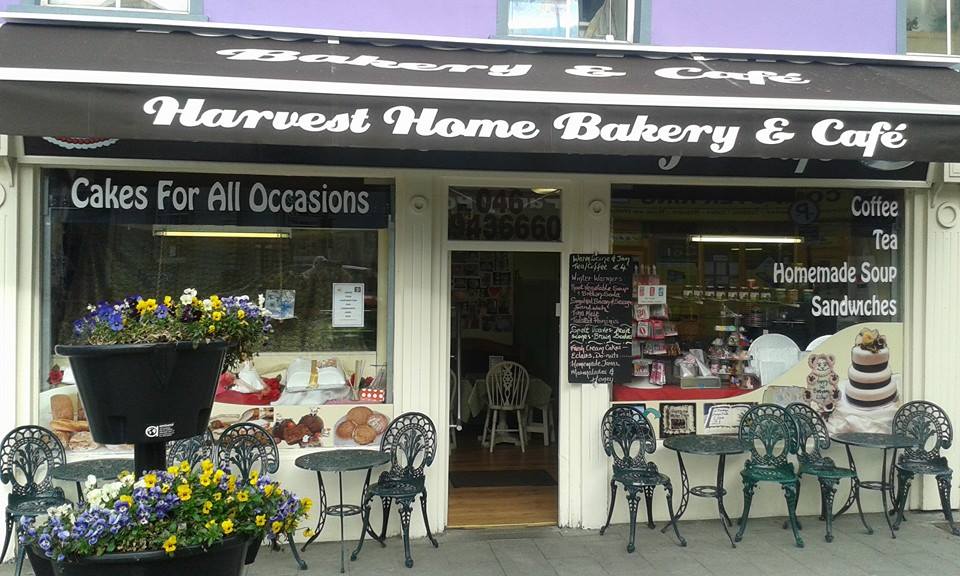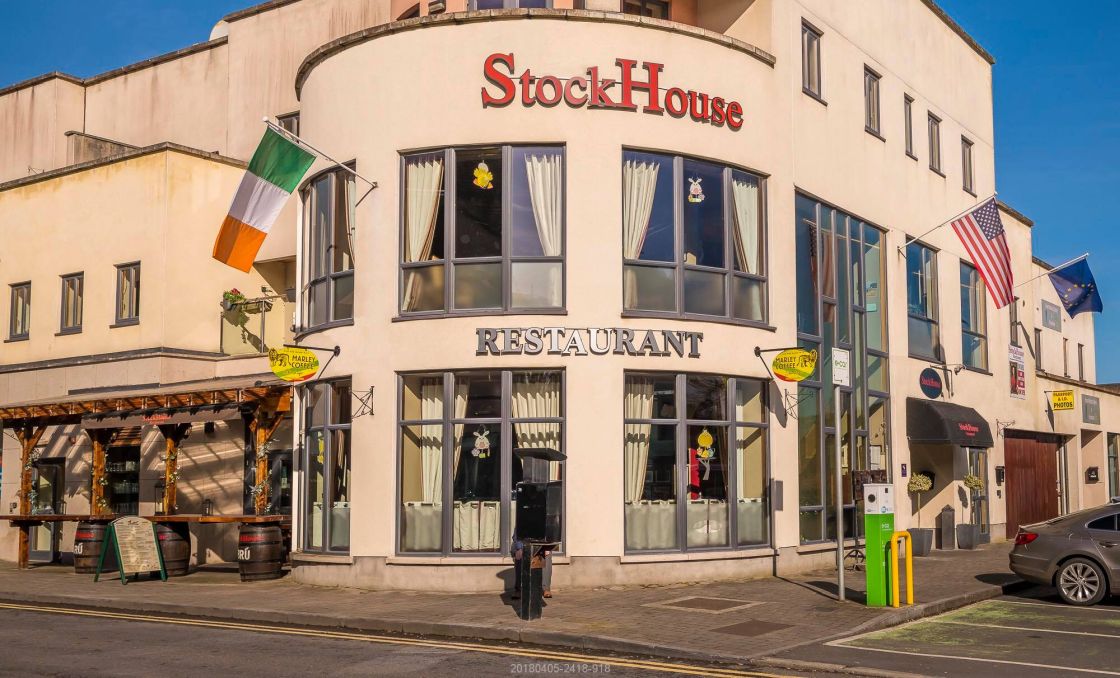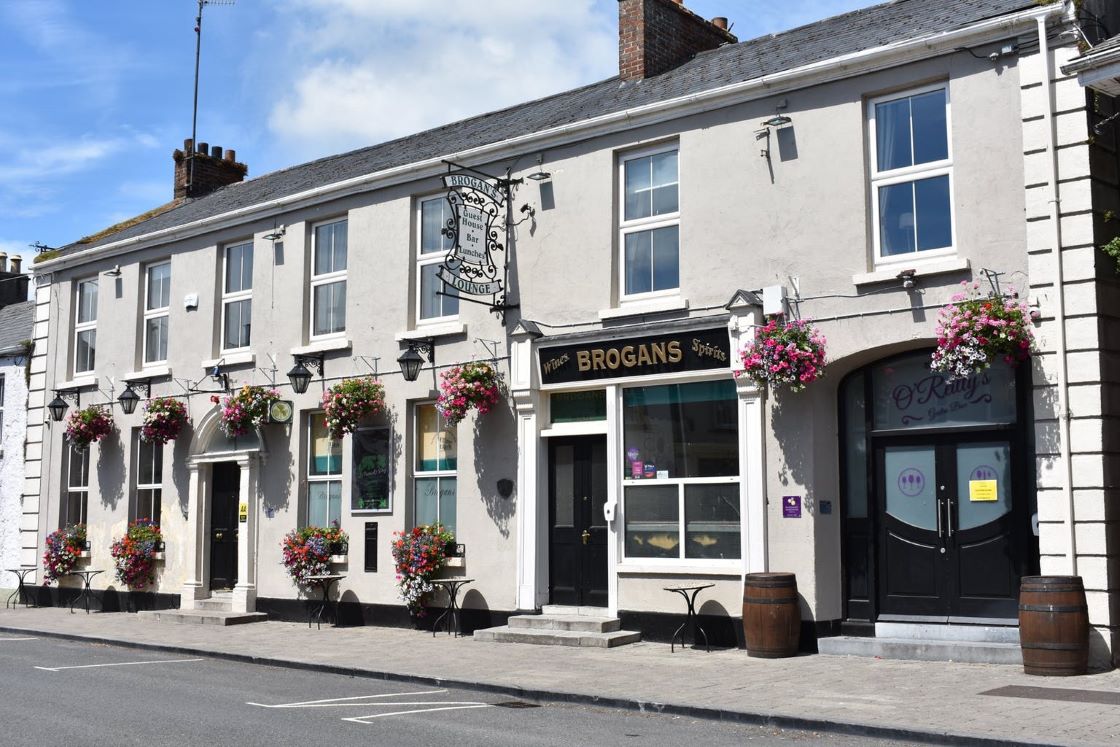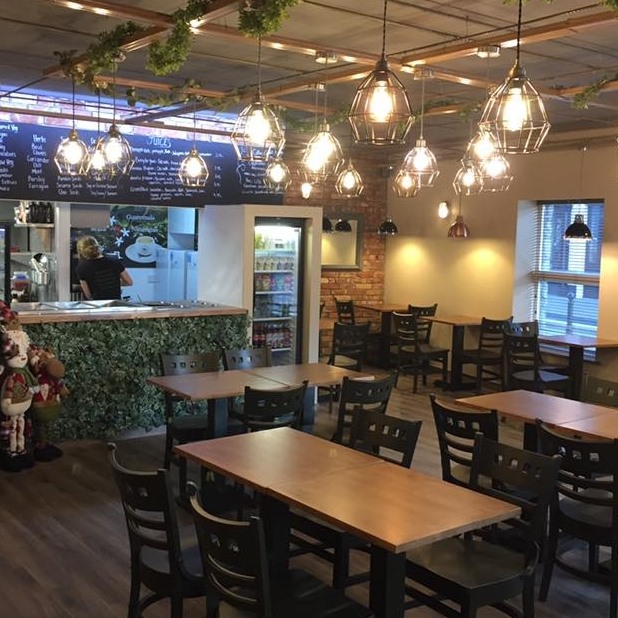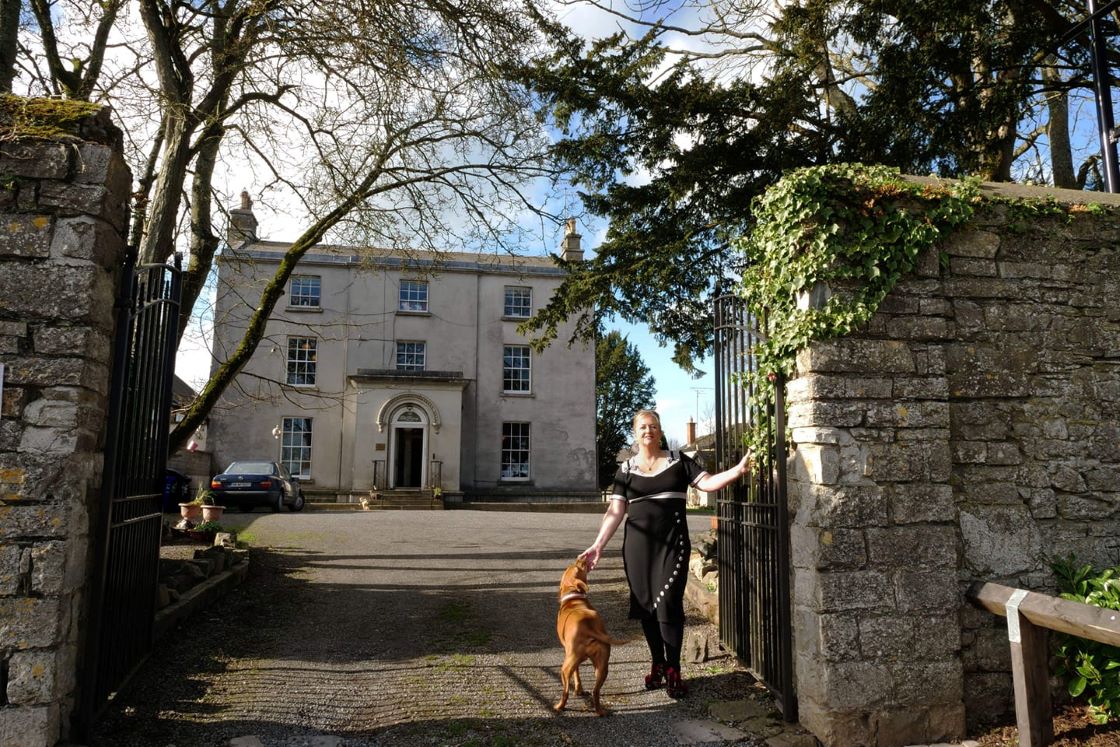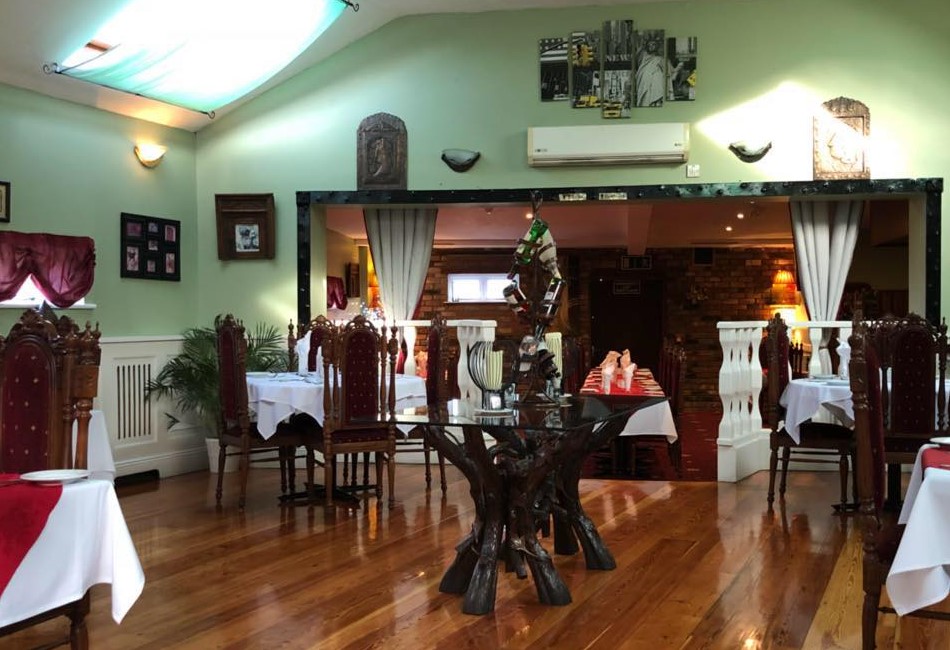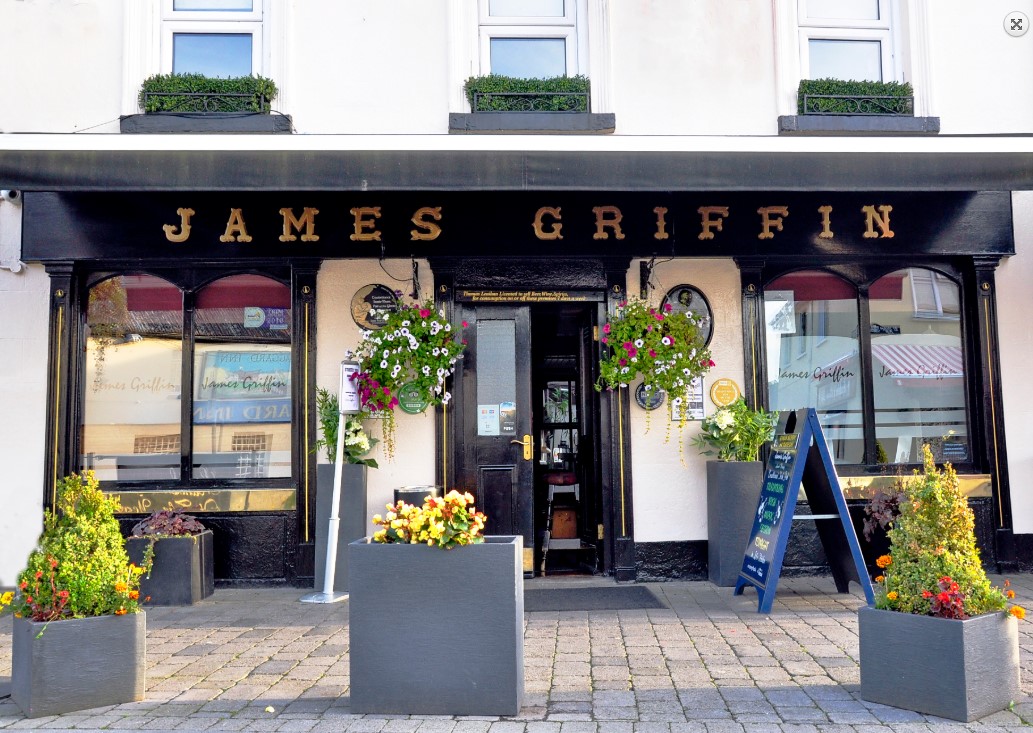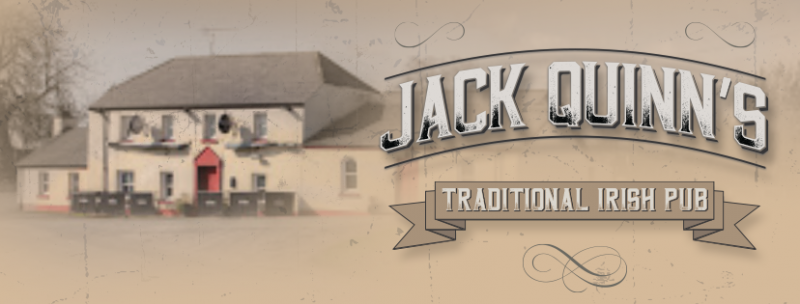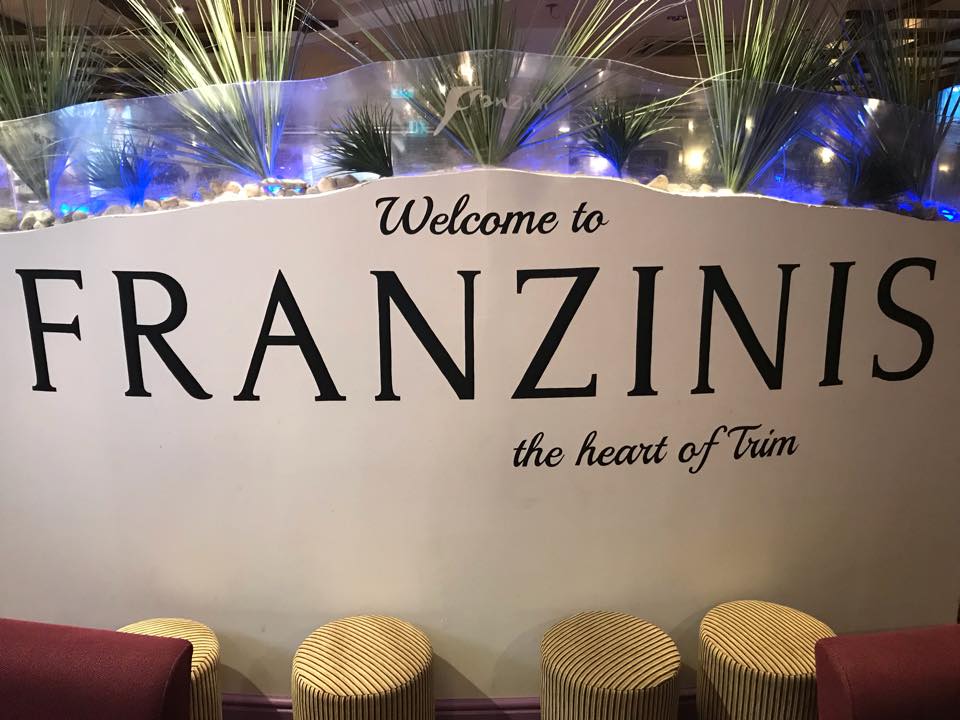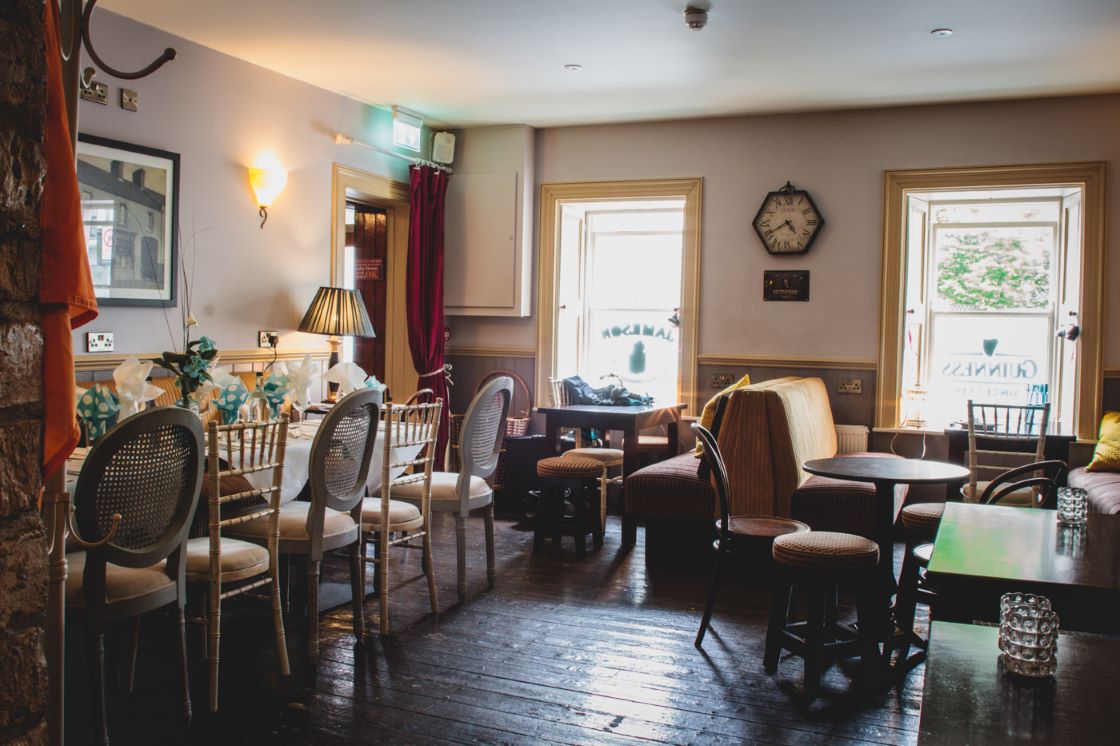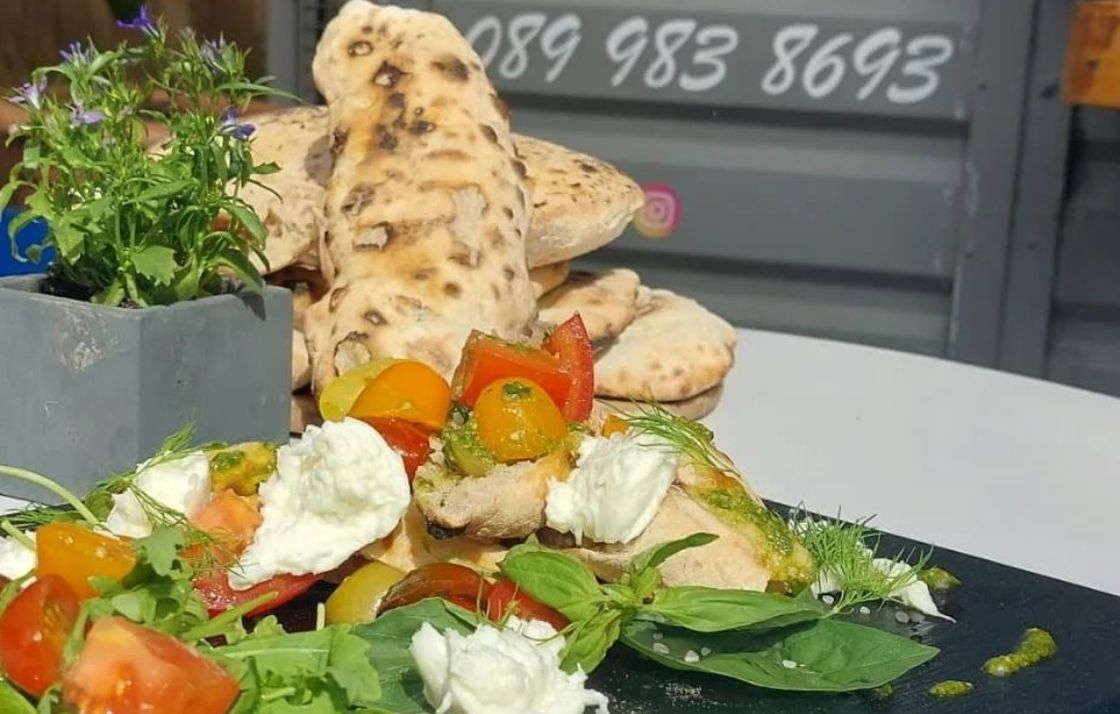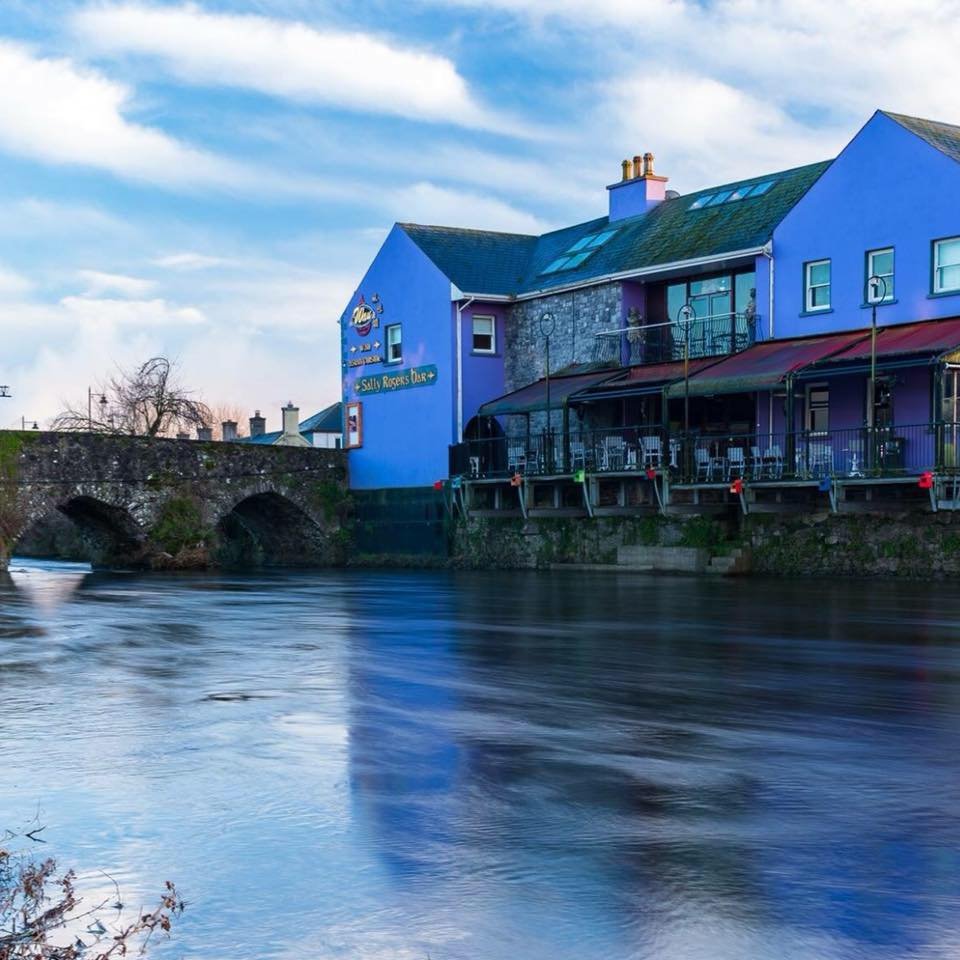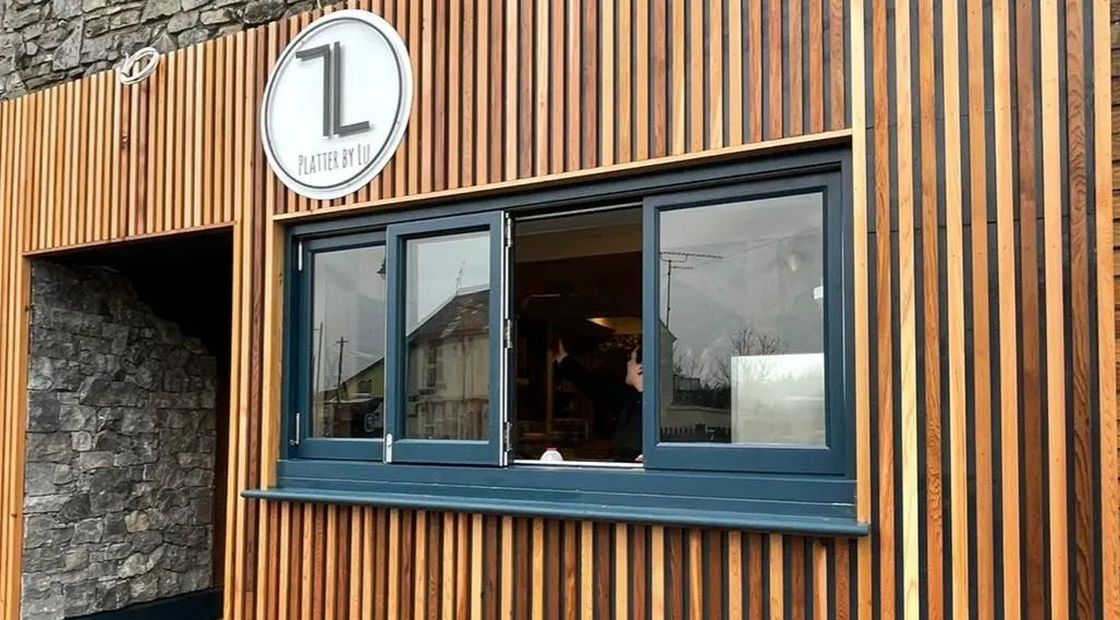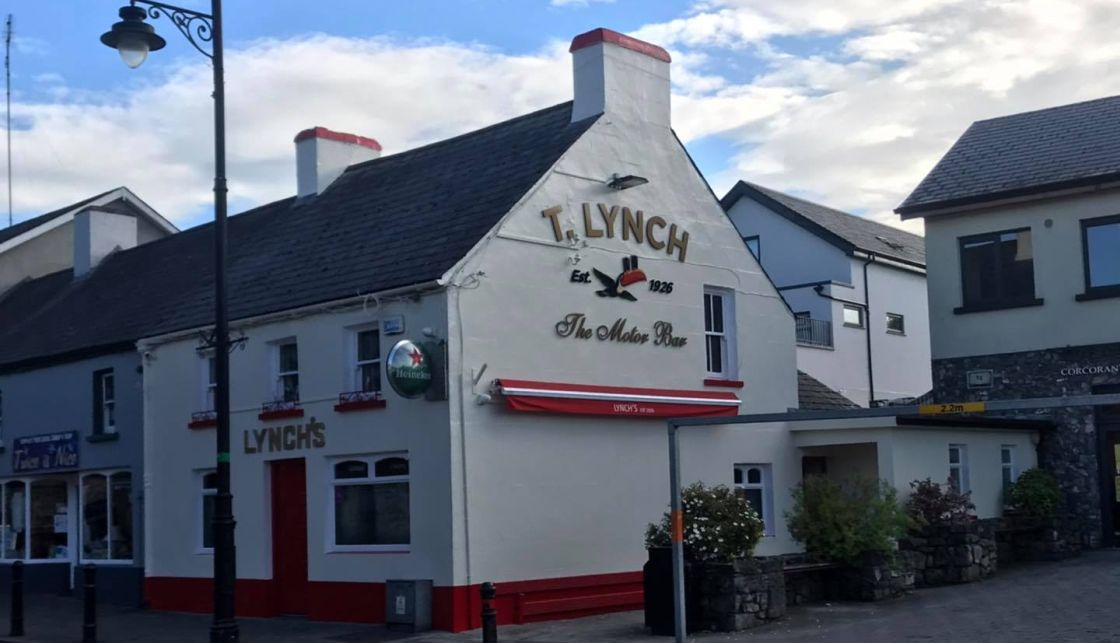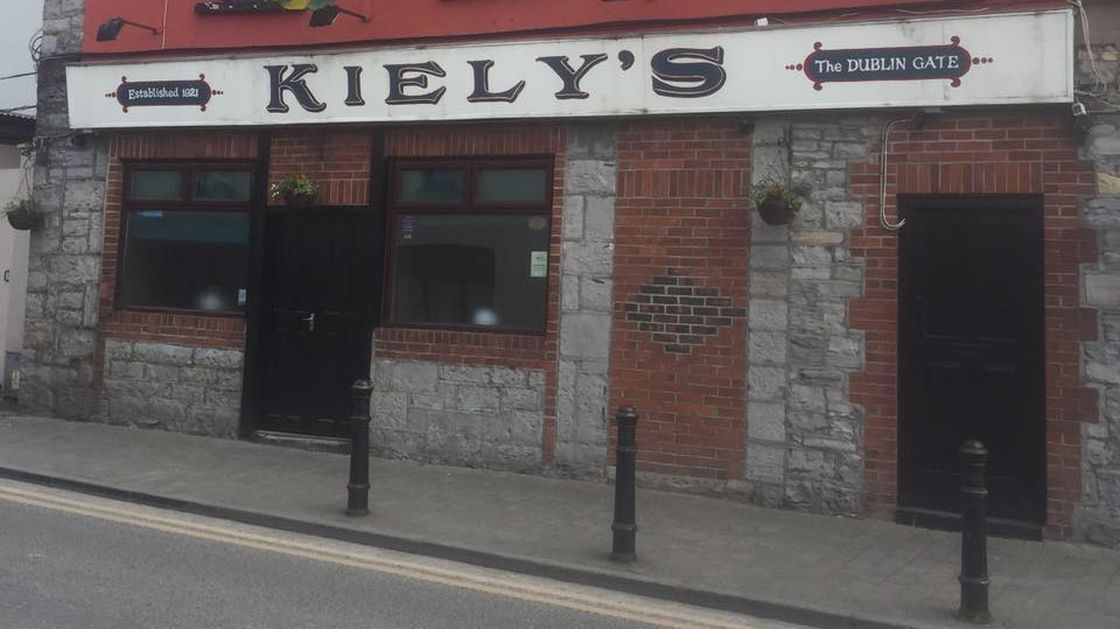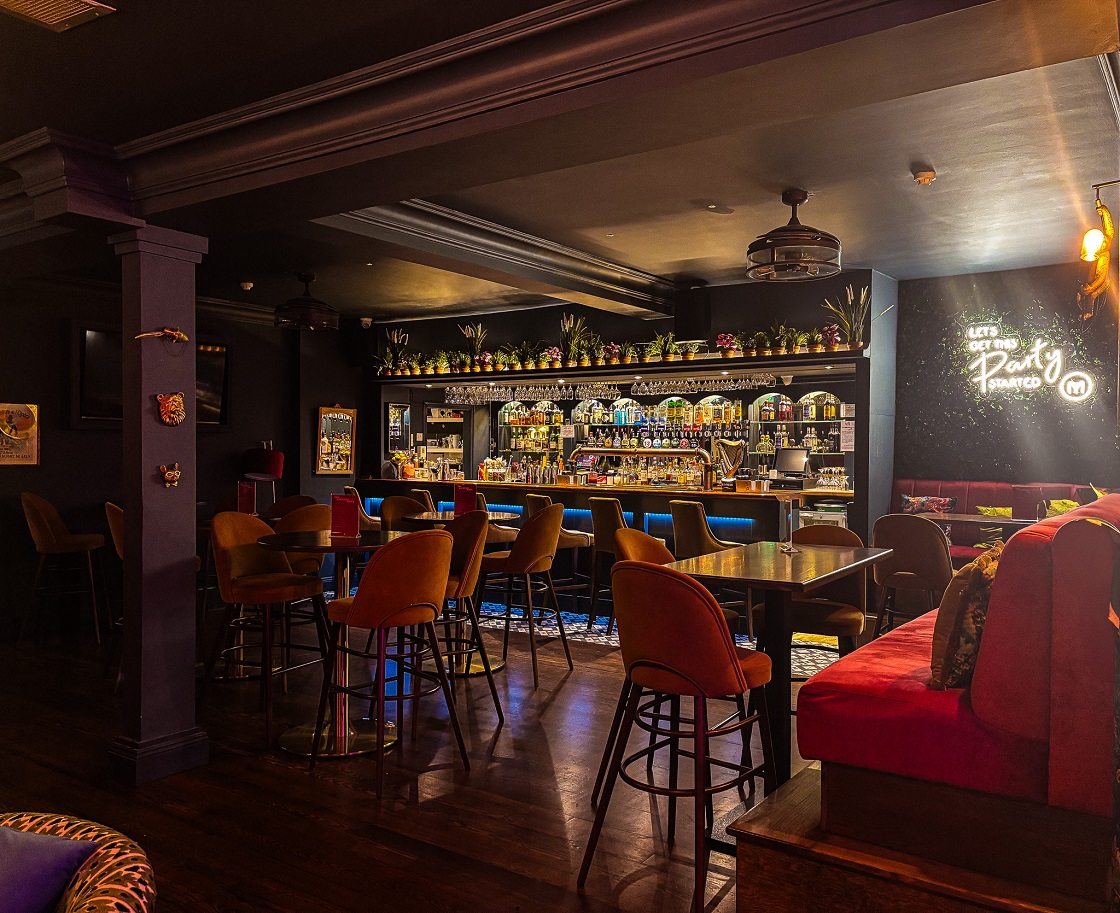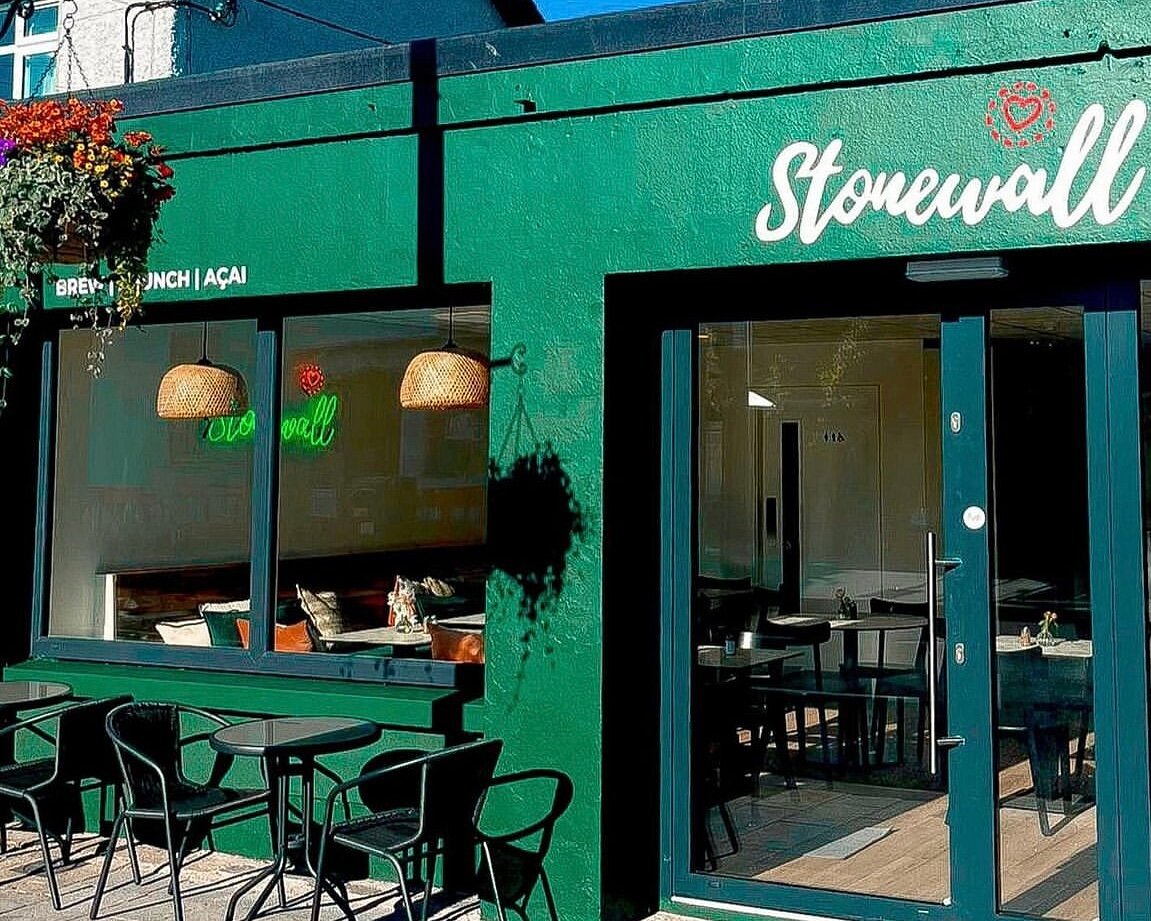A place made famous by the monastic school of St Finian in the 6th century, a seat of learning and place from where many well known saints travelled to Britain and Europe.
Through the Centuries in Clonard
The ancient name for this place was Ross Finnchuil. Later in the Irish speaking days it was known as Cluain Ioraird, or the meadow of Ioraird - Ioraird believed to be a local landlord. Now it is known as Clonard, a place made famous by the monastic school of St Finian in the 6th century. It was from here that many other well known saints travelled to Britain and Europe thus forging links between these far flung places and Clonard. It was also well known as one of the distinguished seats of learning in Ireland. Students from all over Ireland, the British Isles, France and Germany came to this school which at one time numbered 3000. A civilisation sprang up here, which developed and spread throughout the country.
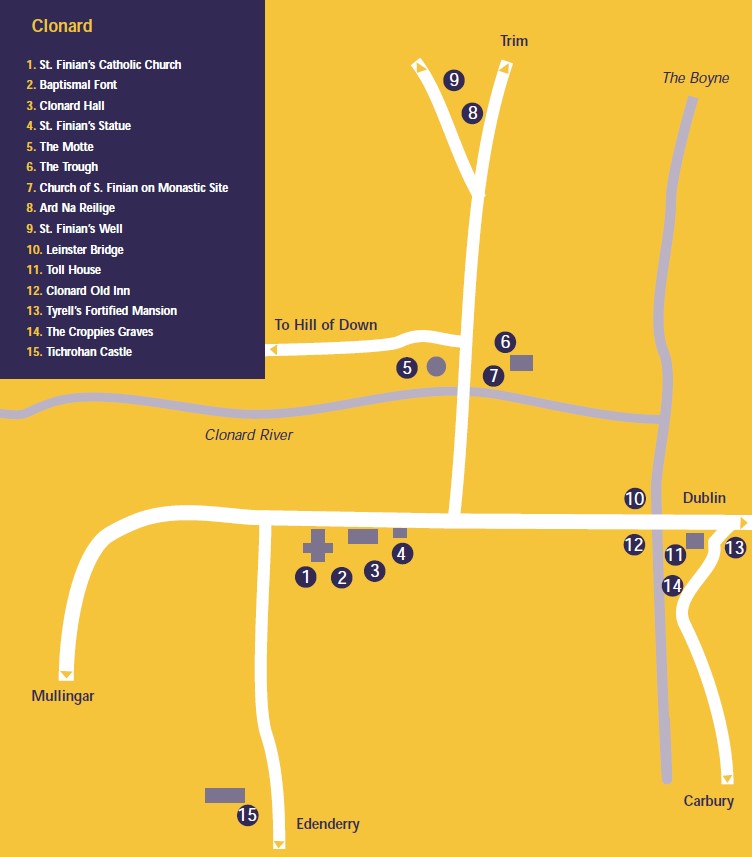
1. St. Finian's Catholic Church
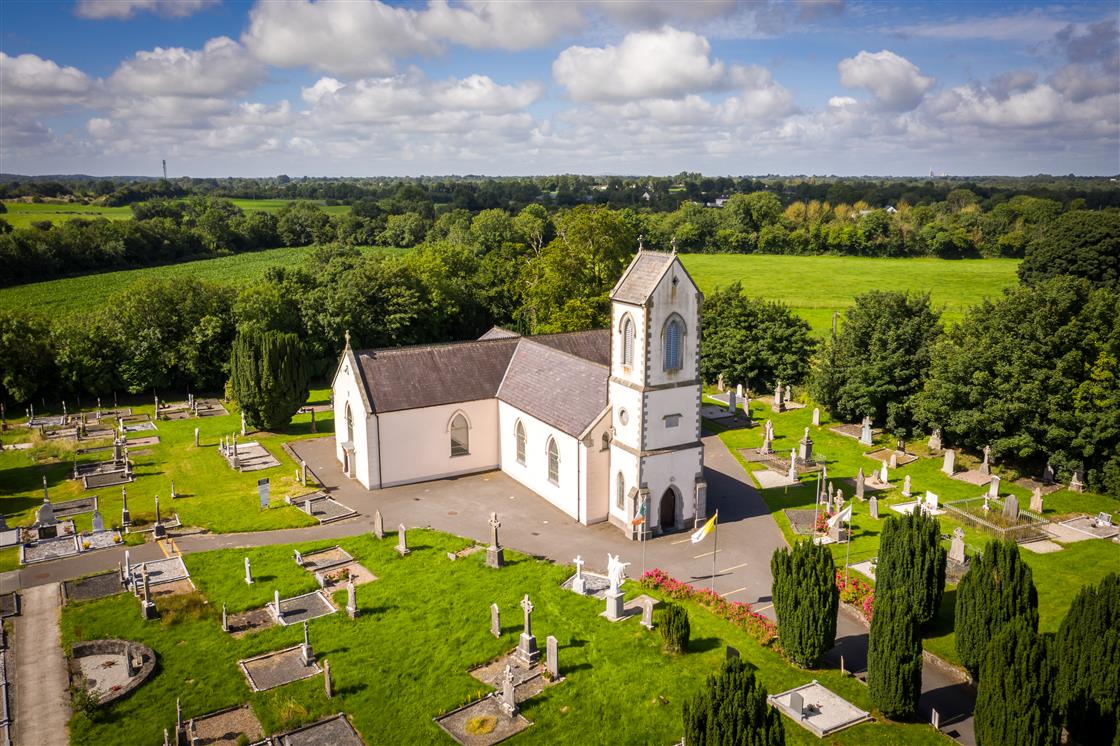
The Church was built in the mid nineteenth century, to replace a former building on this site. The belfry was added in 1870. The doors in the side aisles originally faced northwards but were later closed up and new openings were made one facing eastwards and the other facing westwards. Note the stone holy water fonts in the wall beside the original doors, dated 1807 and donated by local landowner R. Herbert.
The vestry was behind the main Altar before the present one was built in the early 1950's. New stained-glass windows in bright clear colours by Hogan were commissioned and show events in the life of St Finian. They were put in and dedicated in 1957. The life size figures of St Finian and St Etchen were carved in Bolzano, Italy. The Wooden gallery in the long aisle is an addition of the 1940's.
2. Baptismal Font
This medieval stone font was brought to this church in 1991 when the local Church of Ireland was closed to public worship. This vessel has been noted by historians as far back as the 18th century. The font is octagonal in shape with deeply chamfered under panels depicting episodes of our Lord's life. The basin is circular and has a centre drain.
Beginning the very obvious Flight into Egypt and proceeding from left to right, we see the Blessed Virgin holding the Infant Jesus while seated on a donkey, with Joseph walking along side. Next panel is known as a 'filler' and shows an angel holding a book. The Baptism of Jesus in the river Jordan comes next. The upper part of St John the Baptist shown standing on the river bank is obliterated by damage.
To the right is a tree with opposed leaves and two berries on top of the stem growing out of the vase. This too could be a 'filler'. Next come six angels, five having blank shields and the sixth one holds an open book. The following panel shows an angel pointing to what was originally written on an open scroll. Then comes St Peter, seated, and holding in his left hand his emblem - the key and in his right hand a spear.
The eight panel has a Bishop and angel with an open book. The former holds a Crozier and is locally thought to be St Finian. The lower part of the font has four panels of shield-bearing angels some not fully carved and four panels of foliate motifs-wine and grapes, oak leaves and acorns. The base represents eight oak panels. The date is thought to be around 15th/16th centuries.
3. Clonard Hall
This building was formally the state Primary school in Clonard. Built in the mid-nineteenth century, it closed its doors in 1910 when the new school was opened a short distance away to the west. The building is presently a local Community Amenity Centre.
4. St Finian's Statue
This beautiful statue was sculpted in Carrara marble by Italian artist, Carlo Nicoli, and shows St Finian holding aloft the torch by means of which he swept away the waters of Llancarfan Lake (Wales) into the sea and which has become the symbol of his ministry. It was erected in 1957 by the then parish priest of Kinnegad and Clonard.
5. The Motte
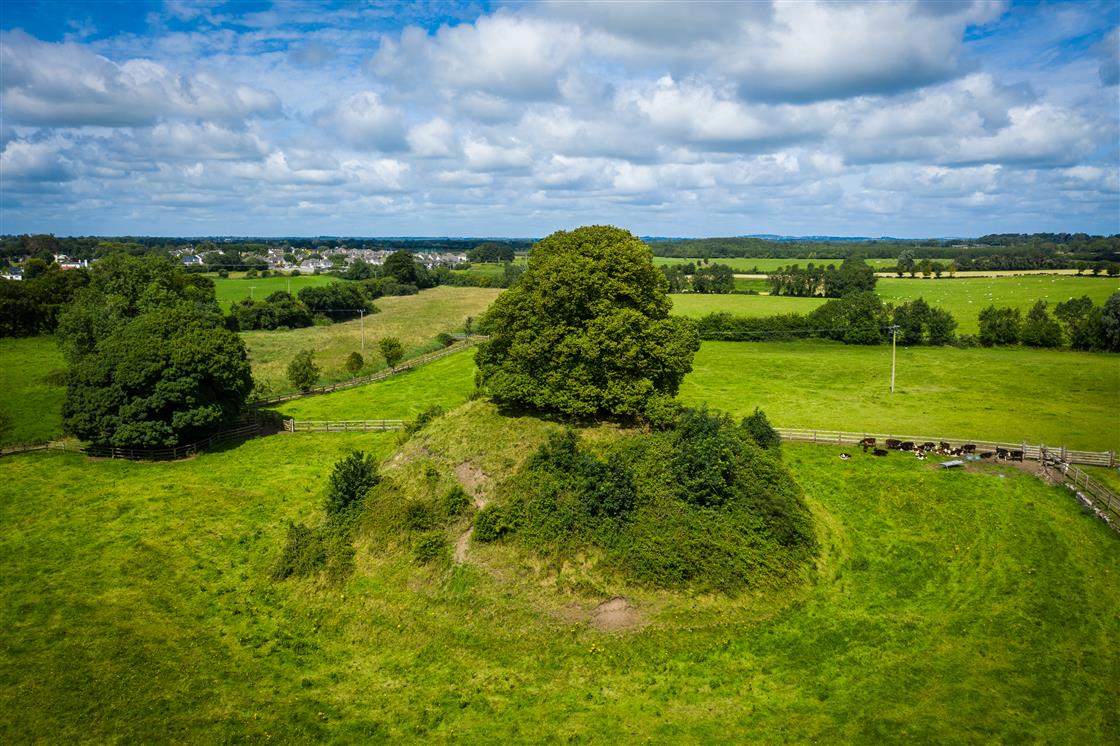
Although the Norman invasion of Ireland took place in 1169, Clonard was not occupied by them until some time after 1177 when the Norman Lord, Hugh De Lacy directed the military occupation of much of this western area of Meath, Mottes were erected on principal roads and in important ecclesiastical centres such as Clonard, which then became a garrison town.This high motte was erected east of the Clonard river, surrounded by the usual Norman fortifications and flanked by the usual bailey. Its perpendicular height is 50 feet and its lower circumference measures 432 feet, the top which is flat is crowned by an impressive stately lime tree. This 12th century Norman motte has become a well known landmark in the area.
6 The Trough
This rectangular trough is cut in a block of limestone. It measures 18 ins deep, 36 ins long and 24 ins wide, it is left undressed on the outside. This trough could have been the lavabo of the monastery. Many superstitions are attached to this trough and it is said that the water in it has curative powers particularly of warts. No local has ever seen it dry or empty even during the hottest summers.
7. Church Of St Finian On Monastic Site
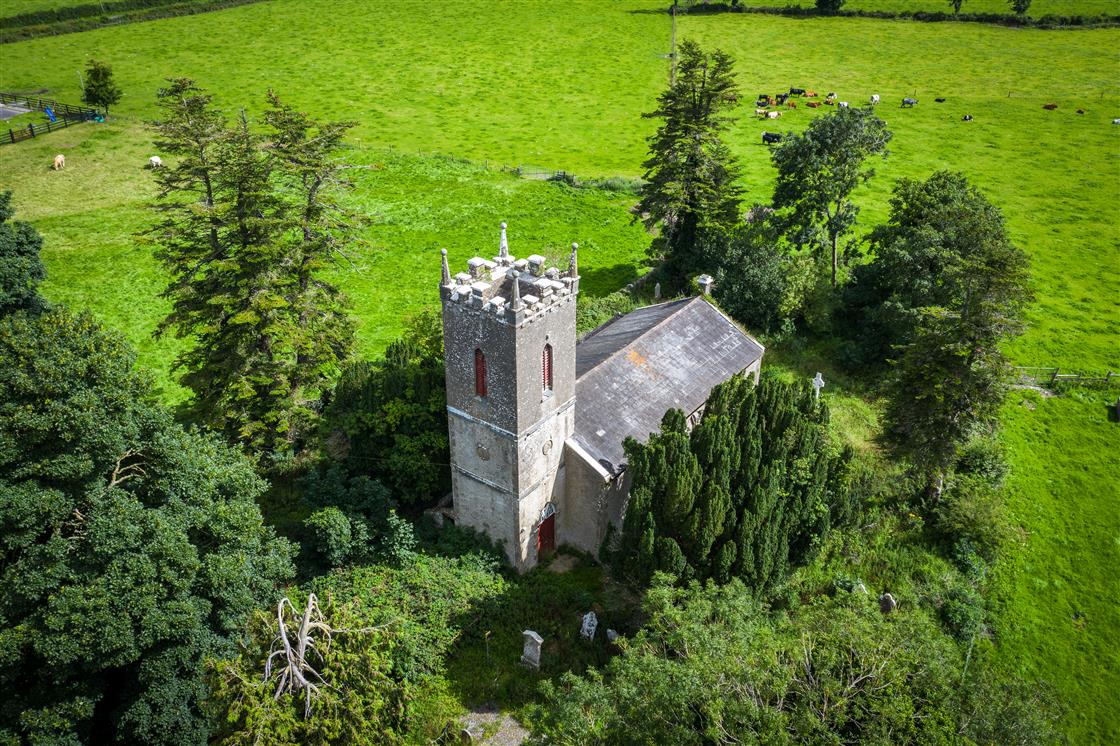
This church of St Finian is said to have been built on the 6th century monastic site. It was the local Church of Ireland serving the immediate area where in times past many Protestant families lived but today there are none. It was closed to public worship in 1991.This church was built on the site of the previous one and is similar in architecture to many churches of the Napoleonic era, note no windows on its northern face. The builder's name, Jas Bell, and the date 1808, are inserted in the church tower. A stone corbel-head, inserted into the tower above the door, is believed to have survived from a previous church, perhaps even the monastery.Originally it boasted of a hot air system of heating by means of an under floor furnace with overhead grills. The entrance to this furnace was outside underneath the east window. Later piped hot water central heating was installed and the necessary furnace for it was built behind the tower.There are many very old headstones in the graveyard some dating back to the 1690's. Local catholic families were interred here in bygone days.Unfortunately no physical remains of the monastery are to seen today, but a small local committee are presently negotiating a lease on the building in order to retain it in a reasonable condition because of the historic significance of its location to serve as a reminder of Clonard's glorious past.
8. Ard Na Reilige
The words Ard na Reilige mean high cemetery History tells us that St Finian chose this raised grassy site as the location of his first church in Clonard but later moved more westward, and this area then became the monastic cemetery. This cemetery survived many centuries and remained consecrated ground until the end of the 17th century. Whenever the soil is disturbed, bones of the ancients buried there are turned up. For this reason the field is retained undisturbed as pastureland by its present owner.
9. St Finian's Well
When St Finian came to Clonard, his first act was to built a church and nearby sink a well. Wells played an important part in early monasteries. When cleaned and blessed they were a source from which holy water was drawn, and may have even formed primitive baptistries. It was traditional in Ireland to go on a pilgrimage to holy well's and St Finian's well was no exception. Certain cures were attributed to the waters of this well. In more recent times a wall was erected around the outer circumference and steps leading to the water level were built.
10. Leinster Bridge
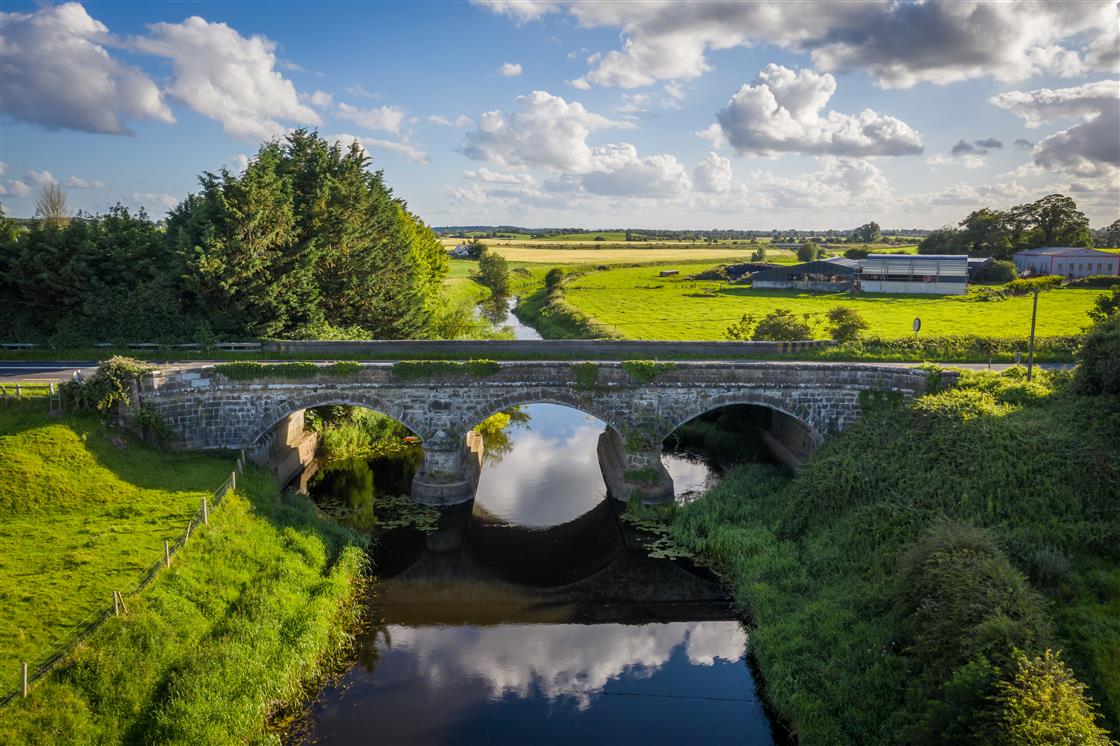
Leinster Bridge was formerly opened in 1831 replacing a much earlier bridge of 9 arches, which spanned the river Boyne less than 100 feet west of it. The old bridge proved unfit for the new fangled stage coach traffic when some of its parapet fell and later some arches gave way. While the new bridge was in progress the stage coach to the West had to be re-routed.
This bridge has four strong arches and forms a boundary line between Meath and Kildare on the N4 to the west. In times past there was a ford on the river at this point and was most probably used by St Finian on his journey from Kilrainy where he originally planned to build his monastery, to Clonard. Thus we have the ancient ford, the nine-arch Anglo Norman bridge and the four-arch Leinster bridge at this spot.
11. Toll House
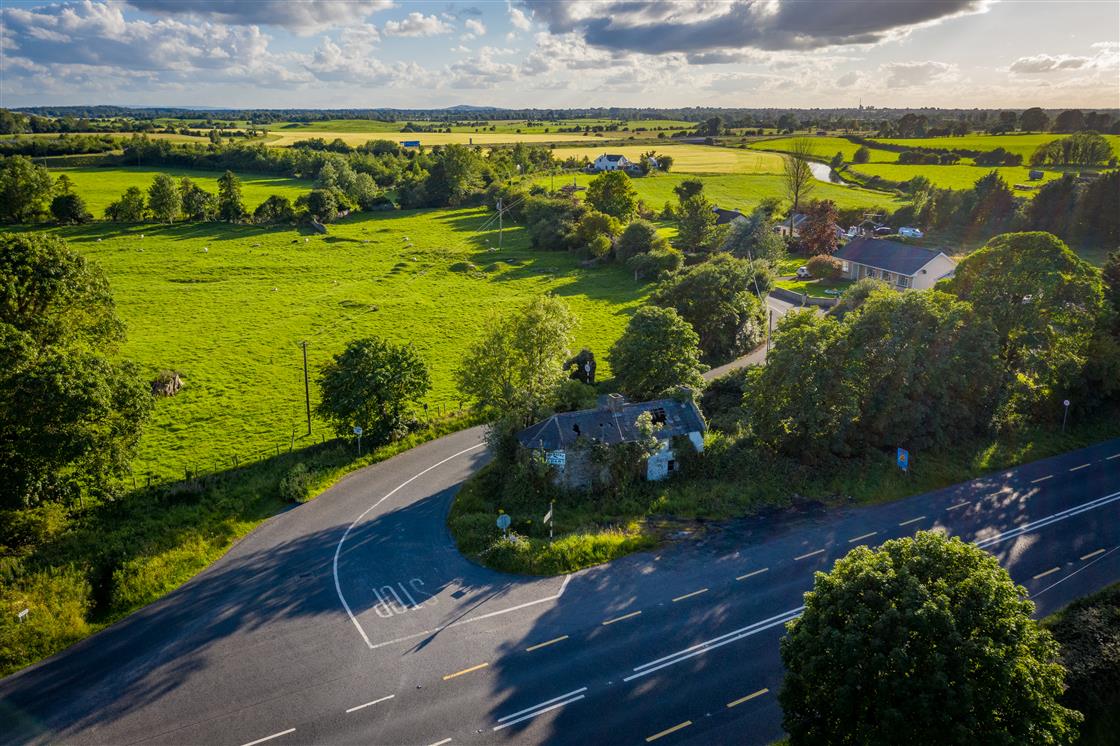
This odd shaped little building which in older days was the Toll House is also known locally as the coffin house due to the unusual shape of its east gable. It is situated on the Kildare side of Leinster Bridge. Tolls were assessed according to the width of the iron hoops on the wheels of the vehicles and many stories have survived locally of ingenious methods to avoid these tolls.
12. Clonard Old Inn
The Old Inn is situated on the line of the old road over the nine-arch bridge that spanned the Boyne. It is in the townland of Mulpedder, where an abbey of regular canons dedicated to St Peter, was founded in the 12th century. Hence the name Mulpedder, or hill of Peter, by which it is still known today. The old road runs through the farmyard of the present owner.
It is impossible to drive a spade or fork through this ground due to the hard core of old road underneath. The horses were changed here so there were many stables around the Inn. Some of the walls of the Inn and the stables are to be seen today where they have been incorporated into the walls of a farm building now standing an the site. The original stone slab which was over the Inn door is now a unique and interesting feature on the front lawn of the present farmhouse. It is about 2 ft square and reads:'Good dry lodgings and breakfast by Hugh Enis Clenard'
The upper floor of the Inn was originally of tiles so perhaps the customers who paid for an upstairs room got 'Good dry lodgings' while those not so wealthy slept downstairs on the mud floor which would not have been too dry.
13. Tyrell's Fortified Mansion
This was once a heavily fortified building to guard an important bridge across the river Boyne in the 18th century. The high sheriff of Kildare at the time of the 1798 rebellion lived at Kilrainy about 2 miles away. He was Lt. Thomas Tyrrell and was in charge of the Garrison stationed in the building, which was known as the Sheriff's house.On 11th July 1798, when this building was attacked by a large group of rebels who had travelled from Wicklow and surrounding areas, the Sheriff, his family and a small garrison put up a spirited defence in a battle that proved to be a turning point in the rebellion. Many of the croppies lay dead and wounded and those who survived escaped to Carbury about six or seven miles away to safety. Today a few massive walls, porch, and portion of a turret are all that survive of this historic building. One may go through the gate and see in the grass the remains of a garden and yard walls of other days. Unfortunately with each passing year the remains are becoming less visible as grass and vegetation take over. In 1998 to commemorate the rebellion of 1798, Tom Mc Caughren, well known award winning Irish writer, published his book 'Ride a Pale Horse' which dealt with the battle of Clonard, albeit in a fictional way, but none the less in a captivating and interesting manner.
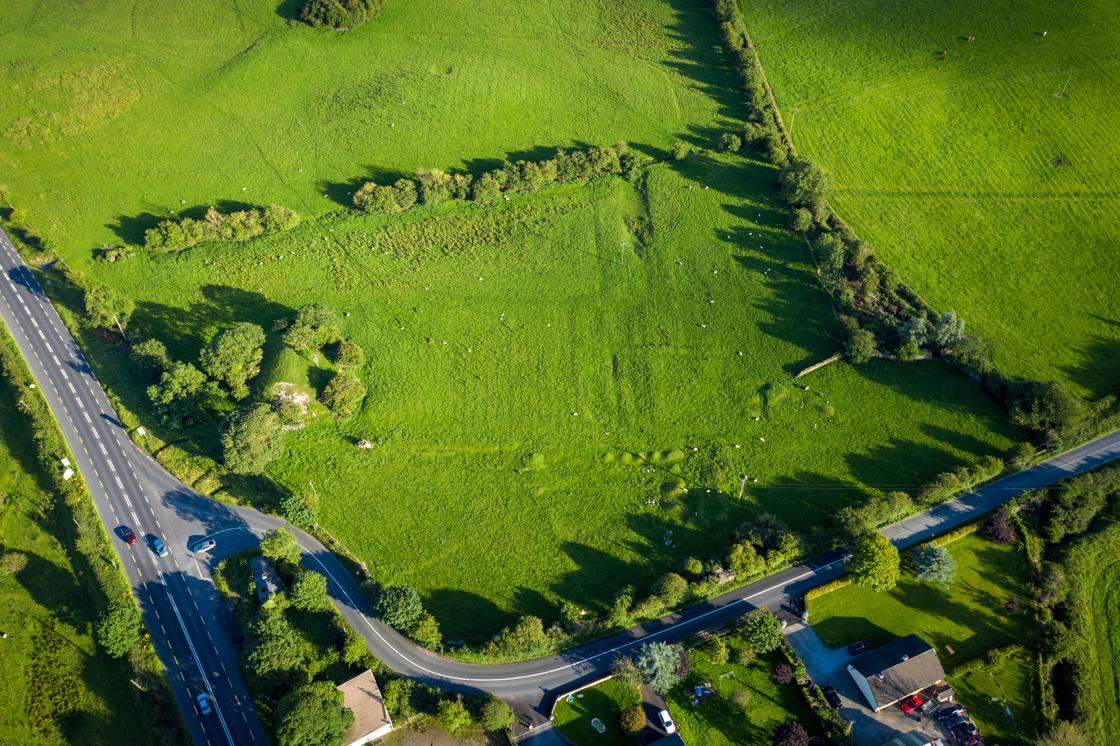
14. The Croppies Graves
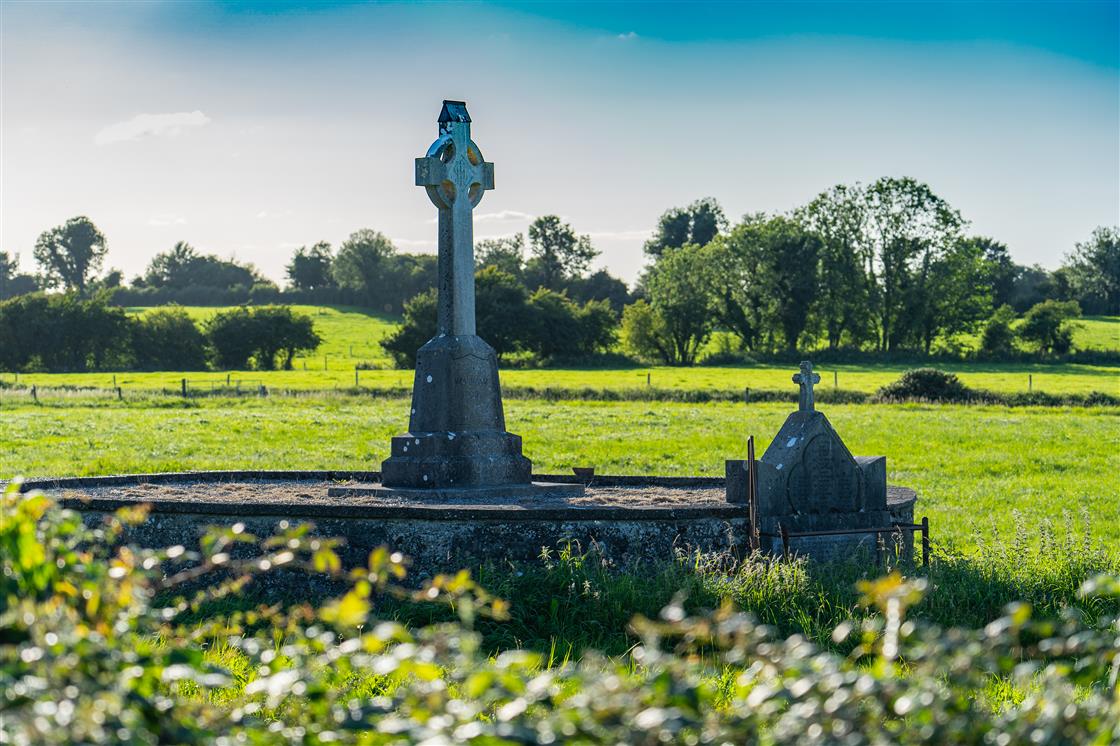
After the battle of Clonard 11th July 1798 when Tyrrell's house was attacked and many of the rebels were killed, their bodies were left lying in adjoining fields and ditches. A mass grave was dug, which became the burial ground of many brave Wexford / Wicklow men. Others, we are told, were carried across the Boyne and interred in an unmarked mass grave in the Church of Ireland graveyard, where a commemorative oak tree was planted in their honour on 11th July 1998.
On the first centenary of this event, a Celtic cross and slab were erected by the priests and people of the parishes of Ballyna, Clonard, and Ballinabrackey. A few years earlier, in 1873, the local landowner Garret Robinson enclosed the mass grave with a stone wall. To mark the bi-centenary, the Bishop of Meath, Dr Michael Smith, celebrated Holy Mass in Clonard church for all those who died in the Battle and a further inscription was added on the west side of the Celtic cross which reads: 'Remembered by the people of Clonard 12th July 1798)'
The ceremonies were attended by Pikemen and women from Wexford and Meath.
15. Ticrohan Castle
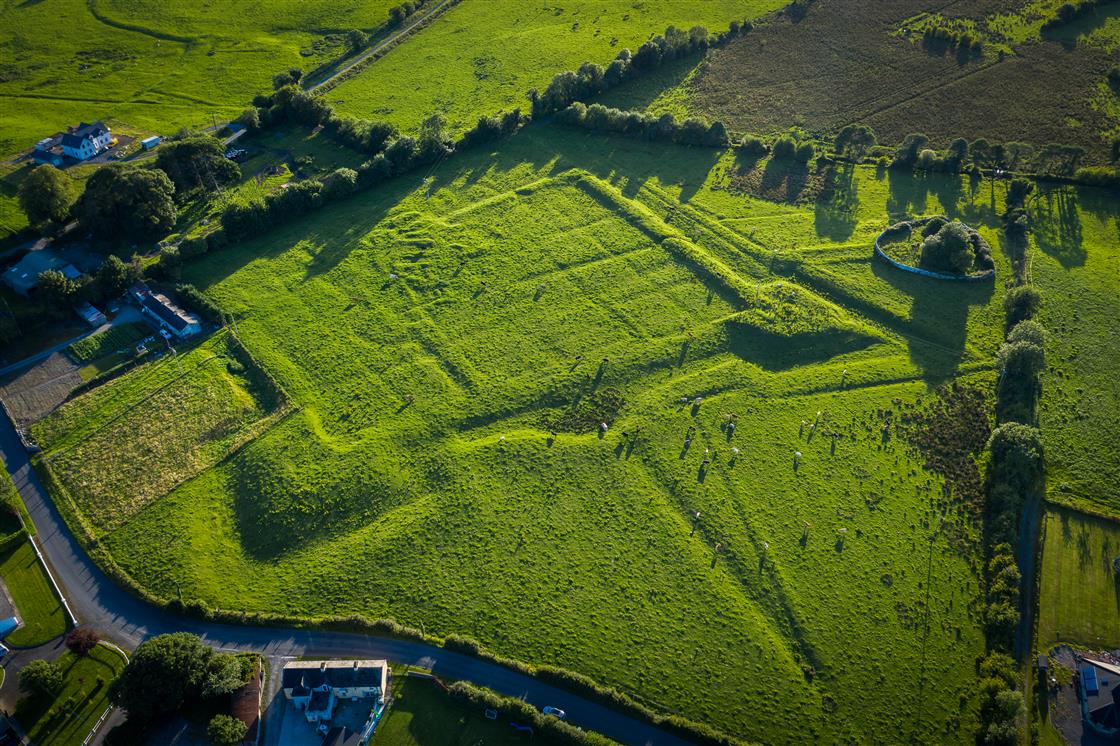
Ticrohan, castle and outworks situated 1.5 miles south west of Clonard on the main Dublin to Athlone road was one of Owen Roe O'Neill¹s midland garrisons in the 1640s, his son Henry having married Helena Fitzgerald of Ticrohan. The place was attacked by the forces of the English parliament in 1650.
It is listed as a garrison in 1675, 1677-8 and 1680. Extensive earthwork outworks consisting of bastions and ramparts survive but the central castle buildings no longer exist












